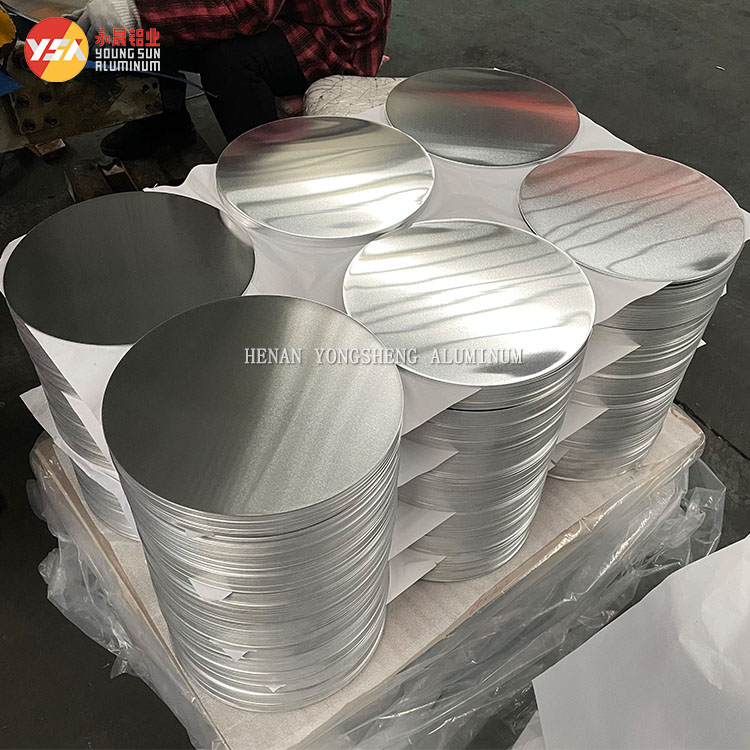Aluminum discs are commonly used in various industries, including lighting, electrical appliances, and cookware. The processing of aluminum circles involves several steps to ensure the quality and performance of the final product. Here is a detailed introduction to the processing technology of aluminum circle.
Selection of Raw Materials
The first step is to select high-quality aluminum coils as raw materials. Typically, 1050, 1060, and 3003 alloy aluminum are used due to their excellent ductility and corrosion resistance, which are suitable for deep processing. The quality of raw materials is crucial for ensuring the final product’s quality.

Cutting and Stamping
The aluminum coil is cut into appropriately sized aluminum sheets, which are then stamped into discs using stamping equipment. This step requires precise molds and efficient stamping equipment to ensure accurate dimensions and smooth edges of the aluminum circles. The design and maintenance of the molds are vital to prevent defects in the products.
Annealing Process
To enhance the ductility and toughness of the aluminum circles, an annealing process is necessary. Annealing involves heating the aluminum circle at high temperatures and then slowly cooling them. This process helps eliminate internal stresses generated during processing, making the physical properties of the aluminum circles more stable. The temperature and duration of annealing need to be precisely controlled for optimal results.
Surface Treatment
Surface treatment of aluminum circle aims to improve their aesthetics and durability. Common surface treatment methods include polishing, anodizing, and coating. Polishing makes the aluminum circles’ surface bright and smooth; anodizing increases their corrosion resistance; and coating allows for various color treatments according to needs. Different surface treatment methods are suitable for different application scenarios.

Quality Inspection
Strict quality inspection is required at every stage of aluminum circle processing. Inspection items include dimensional accuracy, surface smoothness, and physical properties. Only aluminum circles that meet the standards can proceed to the next process or be shipped out. Quality inspection requires advanced detection equipment and standardized inspection procedures.
Packaging and Transportation
Processed and inspected aluminum circles need to be packaged to prevent damage during transportation. Common packaging methods involve wrapping with moisture-proof paper or plastic film and securing with wooden boxes or cartons. The design of the packaging needs to consider various factors during transportation to ensure the integrity of the products.
Conclusion
The processing technology of aluminum circles involves several steps, each requiring precise equipment and strict quality control. High-quality raw materials, advanced processing techniques, and comprehensive inspection measures ensure the high quality and wide application of aluminum circles. With the advancement of technology, the processing technology of aluminum circles continues to improve, leading to the production of aluminum products with better performance and broader applications. The extensive application prospects and continuous enhancement of processing technology for aluminum circles will drive the development of related industries.


